
We had a close look at Massivit’s latest 3D print technology: CIM, or “Cast in Motion”.
Cast in Motion is an adaption of their earlier GDP (“Gel Dispensing Process”) technology. GDP involves extruding a translucent gel that is actually a photopolymer. We’re all familiar with liquid photopolymer resins, but here instead of adding the photoinitators to a liquid, they’re added to a gel.
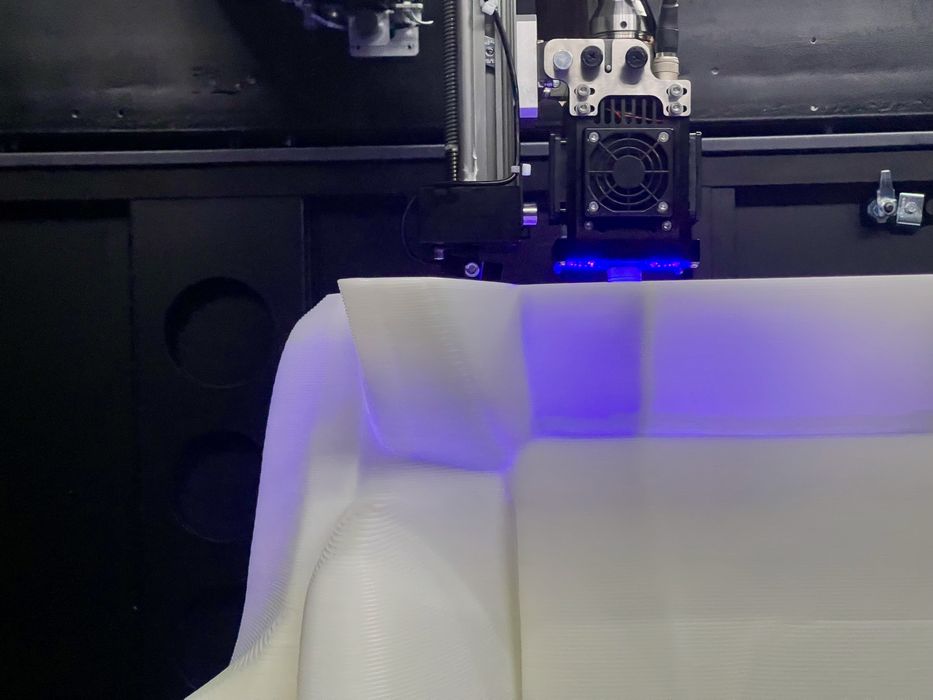
This allows Massivit equipment to rapidly 3D print large objects: as the gel emerges from the extruder, a UV light instantly solidifies it. It’s possible to very quickly build huge objects in this process.
Along the way, Massivit realized there was another way to use GDP: produce large molds for casting. These could be printed even more rapidly because they are just the outline, not the solid interior portions. It’s possible to pour in almost any low-temperature casting material and it assumes the shape of the mold. Finally, the mold itself is dissolved in water to reveal the final object. The entire process is extraordinarily rapid and far faster than traditional methods to produce large parts.
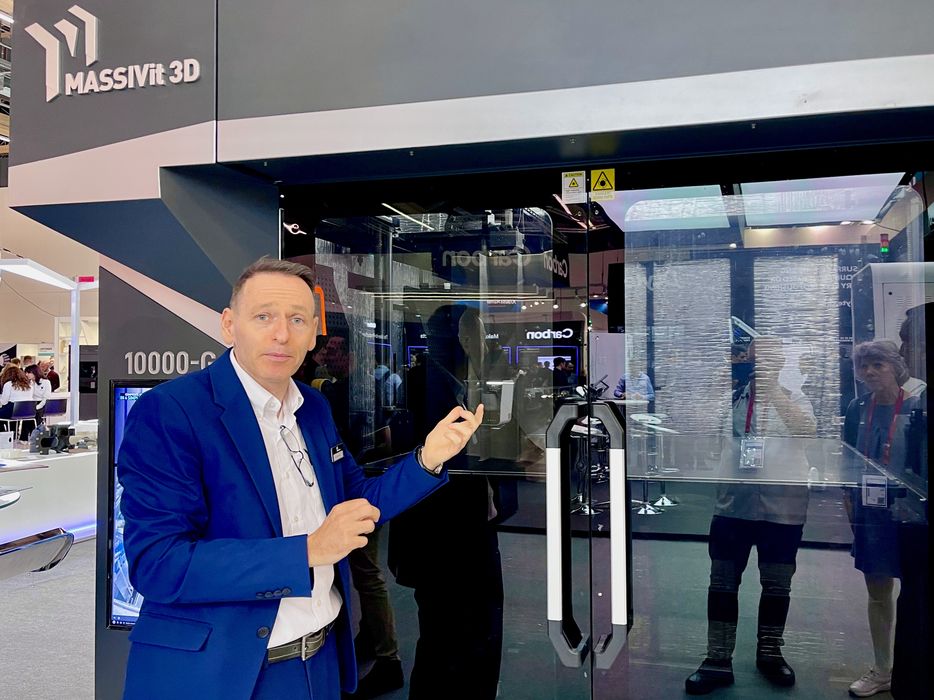
At Formnext we spoke with Massivit CEO Ere Zimmerman, who provided a tour of the technology.
Zimmerman explained that using CIM it would be possible to create shapes that don’t require support structures: you’re simply casting objects, and the UV freezes the gel almost instantly. As the print of the mold proceeds, the castable material is injected into the last 10mm of the print. When the mold is completed printing, so is the casting.
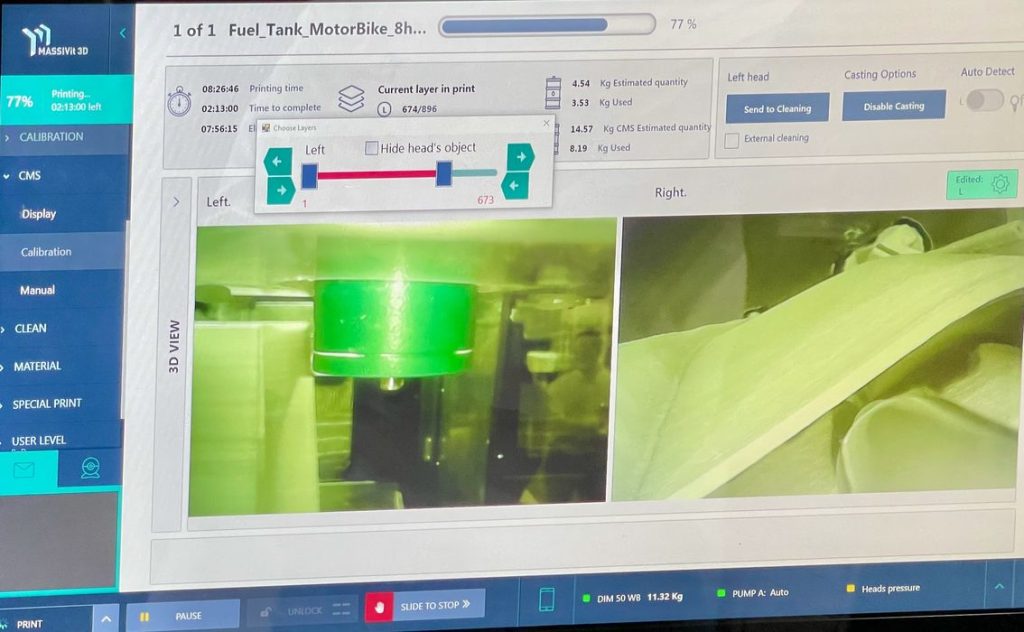
Zimmerman told us that the “soluble” gel material is actually a bit different than we suspected. It’s not truly dissolvable; instead it’s a “dip and crumble” material that basically creates a bunch of loose fragments. Zimmerman said these are in fact easily disposable and their approach is far more green than other soluble systems that result in contaminated water that must be dealt with later.
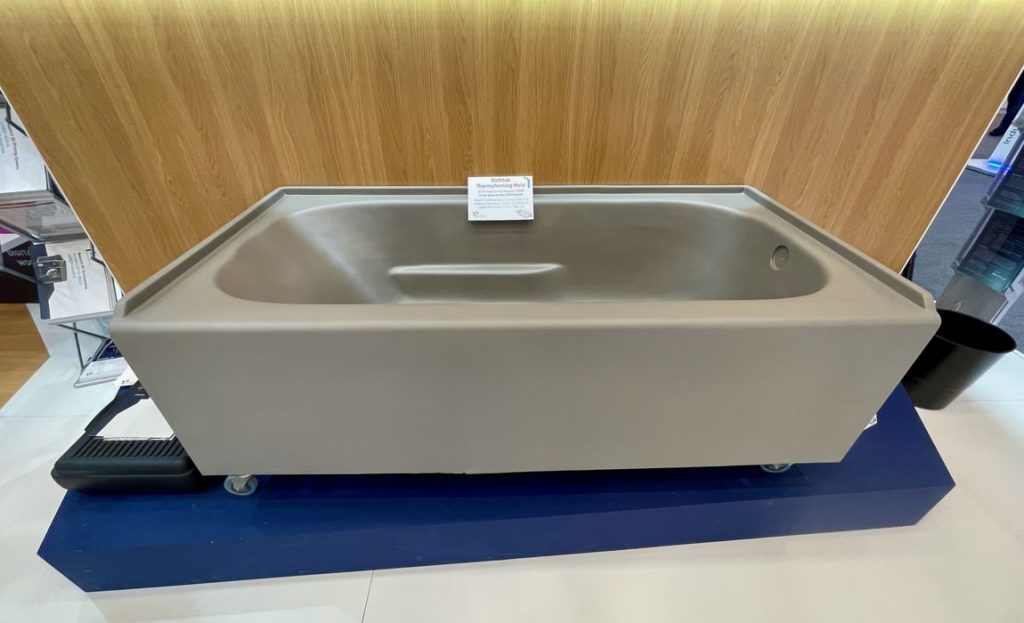
The speed of CIM is notable: Massivit was able to produce a life-size car seat in only 10 hours of printing. They’ve seen a wide variety of applications from customers, including industrial molds for motorcycles, full size bathtub models, and other automative, aerospace and marine applications.
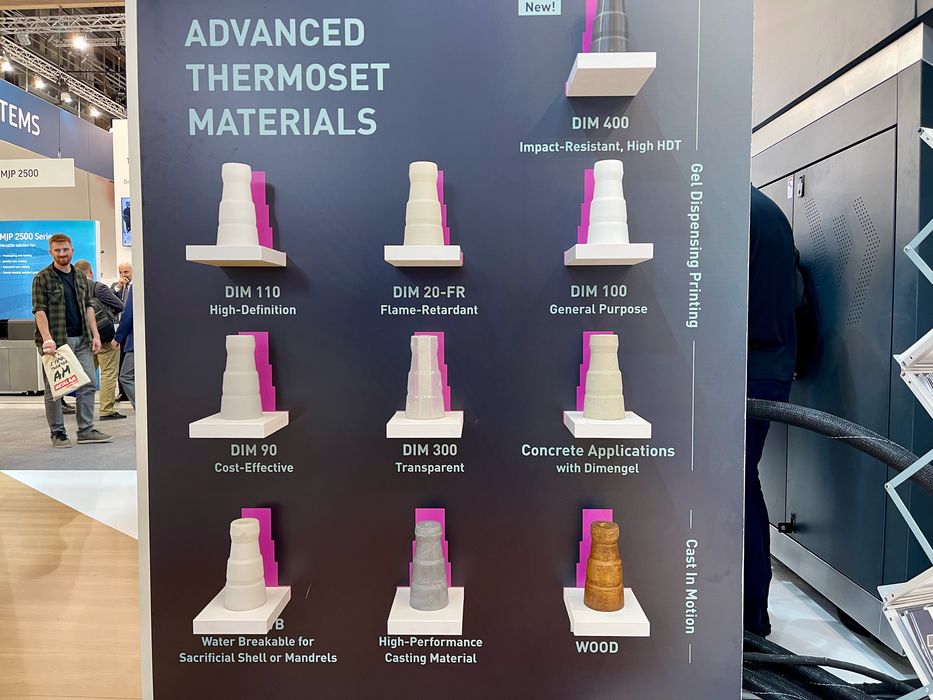
The materials possible for use in the CIM process are quite varied. Above you can see some of the materials they’ve certified for use with the CIM process, and it’s likely they are working on many more.
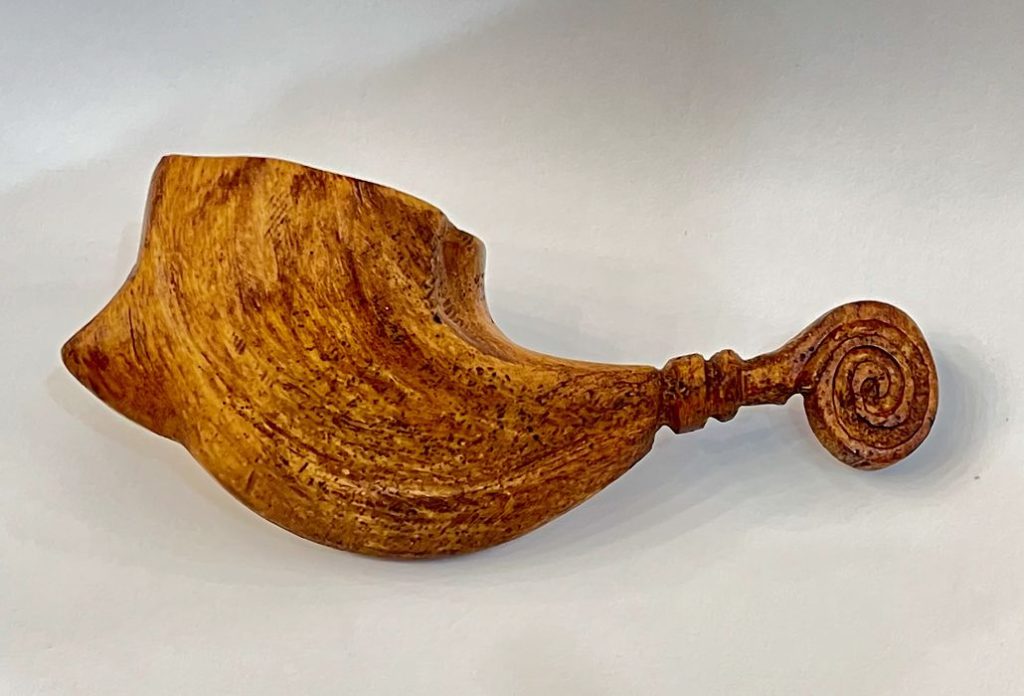
While there are the usual material suspects on their list, they have a couple of highly unusual materials. One of them is “wood”. A sample print of this material is shown above, and it looks pretty good.
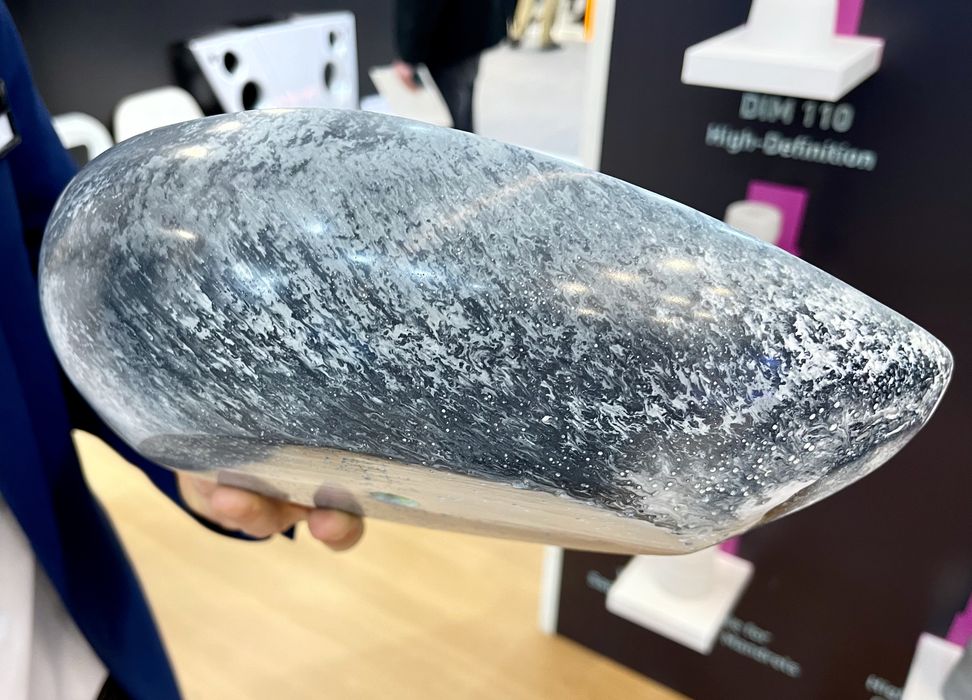
Another unusual material used in CIM is “marble”, which is shown here. It’s a heavy object, to be sure, and quite unique. Zimmerman said the system is also capable of handling concrete.
For the rapid production of large objects, it seems that Massivit’s CIM process is quite appropriate.
Via Massivit

